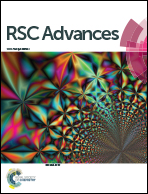Analysis of 17 elements in cow, goat, buffalo, yak, and camel milk by inductively coupled plasma mass spectrometry (ICP-MS)
Abstract
We analyzed the concentrations of 17 elements including arsenic (As), lead (Pb), cadmium (Cd), chromium (Cr), copper (Cu), nickel (Ni), zinc (Zn), strontium (Sr), tin (Sn), aluminum (Al), potassium (K), calcium (Ca), magnesium (Mg), iron (Fe), manganese (Mn), sodium (Na), and selenium (Se) in cow, goat, buffalo, yak, and camel milk in China using inductively coupled plasma mass spectrometry. The concentrations of the elements varied and depended on the milk type. K, Ca, Na, and Mg were the most abundant elements. Fe and Zn concentrations ranged from 1 to 6 μg g−1, while Cu, Al, and Mn concentrations ranged from 0.1 to 1 μg g−1. Trace elements, especially toxic trace elements, were present at very low concentrations; however, Pb concentrations in cow milk reached the MRLs established by the Codex Alimentarius Commission. Data were analyzed by chemometrics to evaluate the correlations between elements in the milk samples. PCA and factor analysis highlighted the relationship between element distribution and milk type. The LDA model correctly identified most milk types. Element analysis combined with chemometrics can be used to distinguish milk types.



 Please wait while we load your content...
Please wait while we load your content...